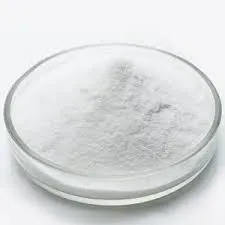
Nov . 08, 2024 10:40 Back to list
Understanding HPMC Safety Protocols for Enhanced Laboratory Practices and Health Standards
Understanding HPMC Safety Key Considerations in Pharmaceutical and Food Applications
Hydroxypropyl methylcellulose (HPMC) is a versatile cellulose derivative commonly used in pharmaceutical and food industries. Its unique properties make it a popular choice for drug formulations, food additives, and various other applications. However, as with any substance used in production and consumption, understanding the safety implications of HPMC is crucial. This article delves into the safety aspects of HPMC, addressing concerns, regulatory guidelines, and best practices to ensure its safe use.
What is HPMC?
HPMC is a semi-synthetic polymer derived from cellulose. It is odorless, tasteless, and has excellent solubility in water, making it an ideal thickening agent, stabilizer, or film-forming agent. In pharmaceuticals, it is extensively used in tablet formulations, controlled-release medications, and as a coating agent. In the food sector, HPMC serves as an emulsifier, thickener, and moisture-retaining agent in various food products.
Safety Profile of HPMC
Non-Toxicity and Acceptability
HPMC is generally recognized as safe (GRAS) by the US Food and Drug Administration (FDA) when used as a food additive. Numerous studies have demonstrated its non-toxic nature and low allergenic potential. Furthermore, HPMC is deemed non-carcinogenic, as it does not undergo significant metabolic transformation in the body, which means it is excreted without accumulating harmful metabolites.
Regulation and Standards
Safety assessments of HPMC are governed by regulatory bodies worldwide. In the United States, the FDA has established guidelines for HPMC use, providing limits and specifications for its use in different products. The European Food Safety Authority (EFSA) has similarly evaluated HPMC and confirmed its safety for human consumption within specified limits. Manufacturers are required to adhere to Good Manufacturing Practices (GMP) to ensure product quality and safety.
Potential Safety Concerns
While HPMC is widely regarded as safe, some concerns can arise in its use
hpmc safety

1. Digestive Issues Some individuals may experience mild gastrointestinal discomfort when consuming products containing HPMC, such as bloating or gas. These symptoms are often temporary and mild but should be noted, especially in sensitive populations.
2. Allergic Reactions Though rare, there have been instances of allergic reactions to HPMC in some individuals. Symptoms may include skin rashes or respiratory issues. Consumers with known sensitivities should be cautious and consult healthcare providers if they experience adverse reactions.
3. Environmental Considerations The production and disposal of HPMC may raise environmental concerns, particularly regarding sustainability. Ensuring responsible sourcing and waste management practices can mitigate these issues.
Best Practices for Safe Use of HPMC
To ensure the safe use of HPMC in both consumer products and industrial applications, the following best practices should be adopted
- Adherence to Regulatory Standards Manufacturers should always comply with established guidelines and safety evaluations provided by regulatory agencies. This includes conducting regular safety assessments and maintaining transparency in ingredient sourcing.
- Consumer Education Informing consumers about the purpose and safety of HPMC in products is essential. Clear labeling and educational resources can help allay concerns and clarify any misconceptions.
- Sensitive Population Considerations Special care should be taken when HPMC is included in products aimed at vulnerable populations, such as infants, the elderly, and individuals with food allergies. Conducting additional safety studies can ensure that these products are safe for the intended audience.
- Ongoing Research Continuous research into the long-term effects and safety profile of HPMC is vital. This includes monitoring consumer feedback and conducting epidemiological studies to address any emerging concerns.
Conclusion
In conclusion, HPMC is a safe and effective ingredient widely used in the pharmaceutical and food industries. While potential safety concerns exist, adherence to regulatory guidelines, ongoing research, and consumer education can manage these risks effectively. As the demand for versatile and safe additives continues to grow, understanding HPMC’s safety profile will remain a crucial aspect of its application in various sectors.
-
Versatile Hpmc Uses in Different Industries
NewsJun.19,2025
-
Redispersible Powder's Role in Enhancing Durability of Construction Products
NewsJun.19,2025
-
Hydroxyethyl Cellulose Applications Driving Green Industrial Processes
NewsJun.19,2025
-
Exploring Different Redispersible Polymer Powder
NewsJun.19,2025
-
Choosing the Right Mortar Bonding Agent
NewsJun.19,2025
-
Applications and Significance of China Hpmc in Modern Industries
NewsJun.19,2025







